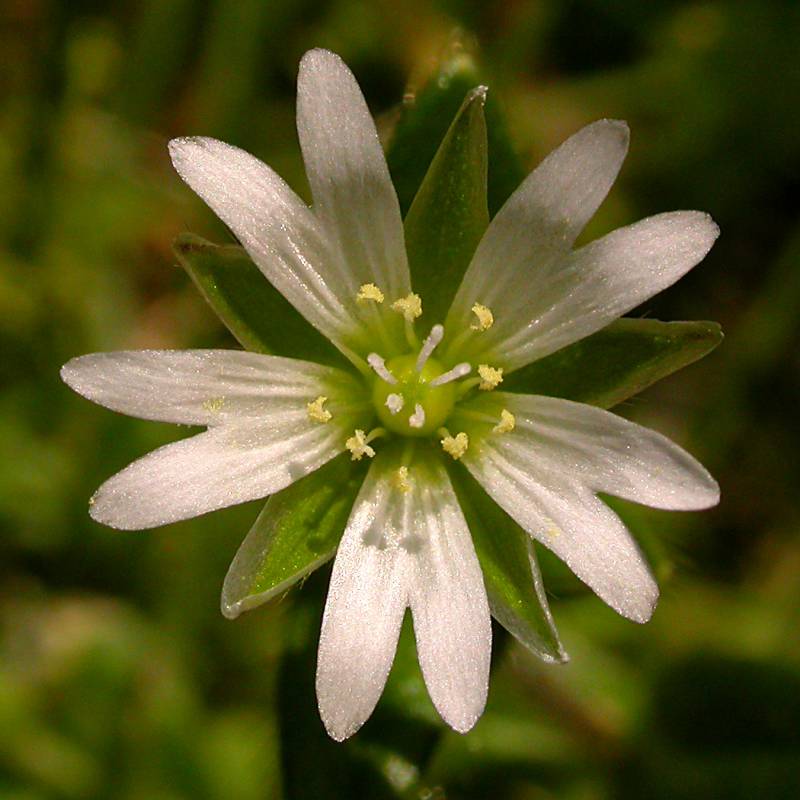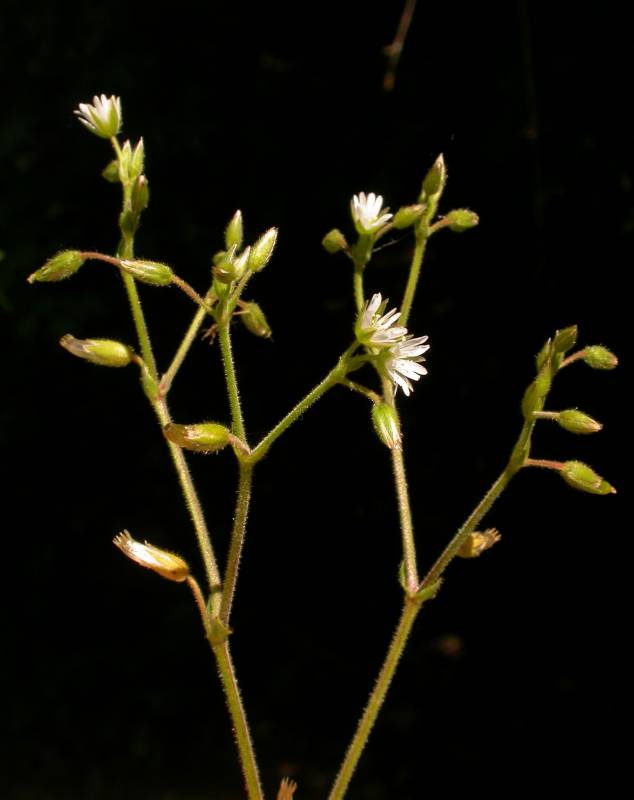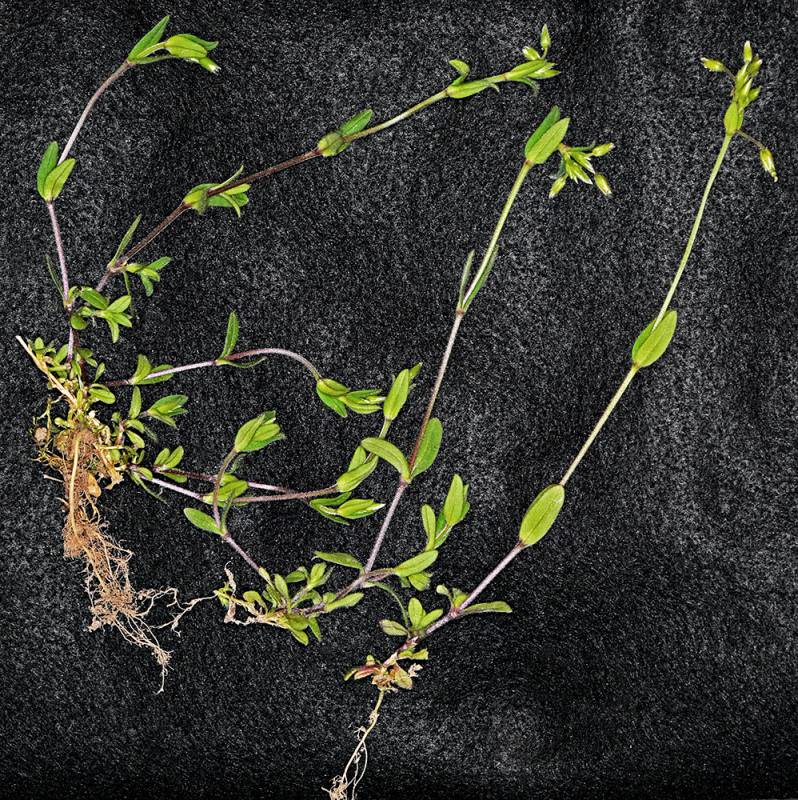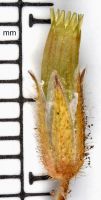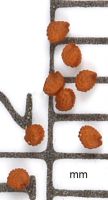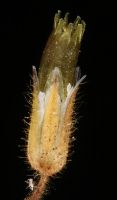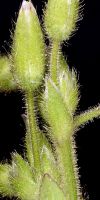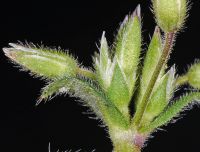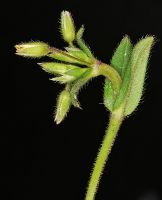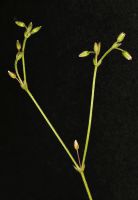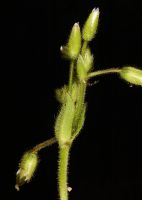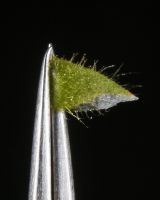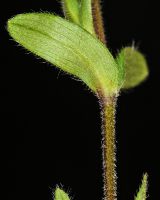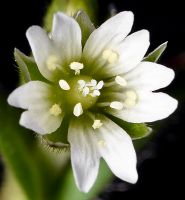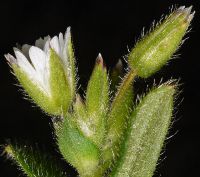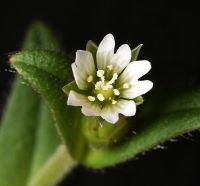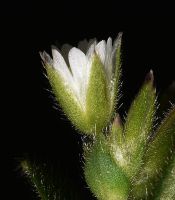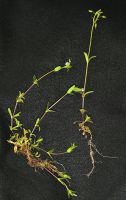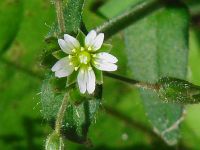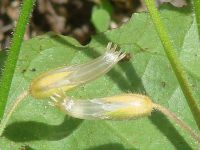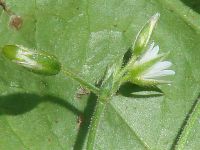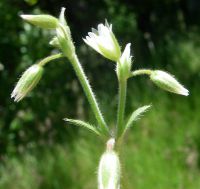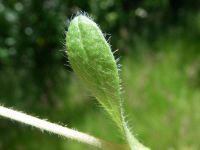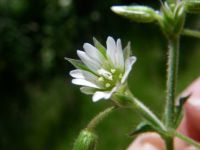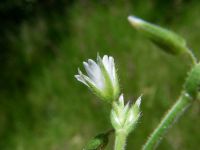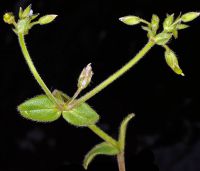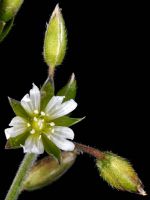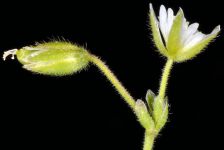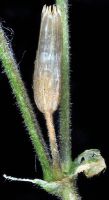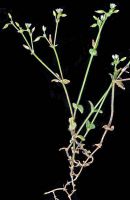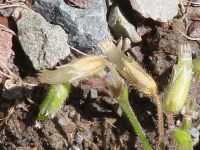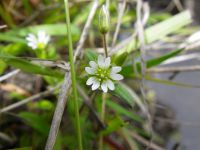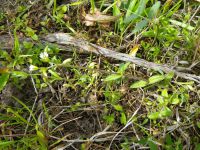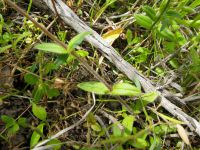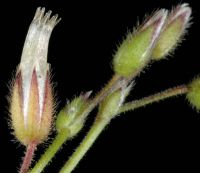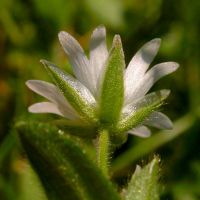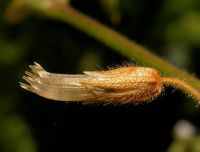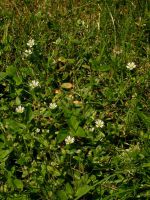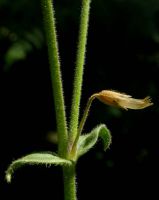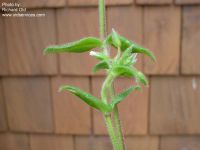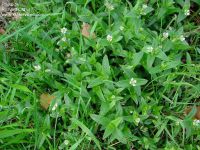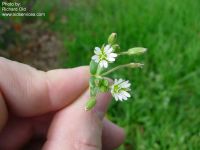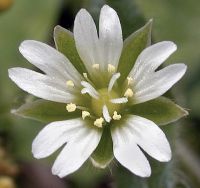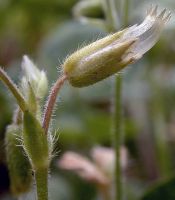Distribution: Occurring on both sides of the Cascades crest in Washington; Alaska to California, east across North America to the Atlantic Coast.
Habitat: Disturbed ground, lawns and gardens
Flowers: March-September
Origin: Introduced from Europe
Growth Duration: Biennial, Perennial
Conservation Status: Not of concern
Pollination: Bees, flies
Stiff-hairy, glandular biennial or perennial, the stems sprawling but the flowering stems erect, 2-4 dm. tall.
Leaves of the prostrate stems opposite, crowded, oblanceolate, 10-25 mm. long and 2-5 mm. broad; leaves of the flowering stems opposite, widely spaced, up to 4 cm. long and 15 mm. broad.
Flowers several in an open, dichotomously branched inflorescence; sepals 5, 4-7 mm. long, stiff-hairy; petals 5, white, bi-lobed, equaling the sepals; stamens 10; styles 5.
Capsule membranous, cylindric, slightly curved, twice as long as the sepals, opening by 10 teeth.
Publication: Enum. Stirp. Transsilv. 1: 425. 1816.
-
ssp. vulgare – common chickweed, mouse-ear chickweed
 Occurring on both sides of the Cascades crest in Washington; Alaska to California, east across North America to the Atlantic Coast.
Occurring on both sides of the Cascades crest in Washington; Alaska to California, east across North America to the Atlantic Coast.
PNW Herbaria: Specimen records of Cerastium fontanum in the Consortium of Pacific Northwest Herbaria database
WA Flora Checklist: Cerastium fontanum checklist entry
OregonFlora: Cerastium fontanum information
E-Flora BC: Cerastium fontanum atlas page
CalPhotos: Cerastium fontanum photos

